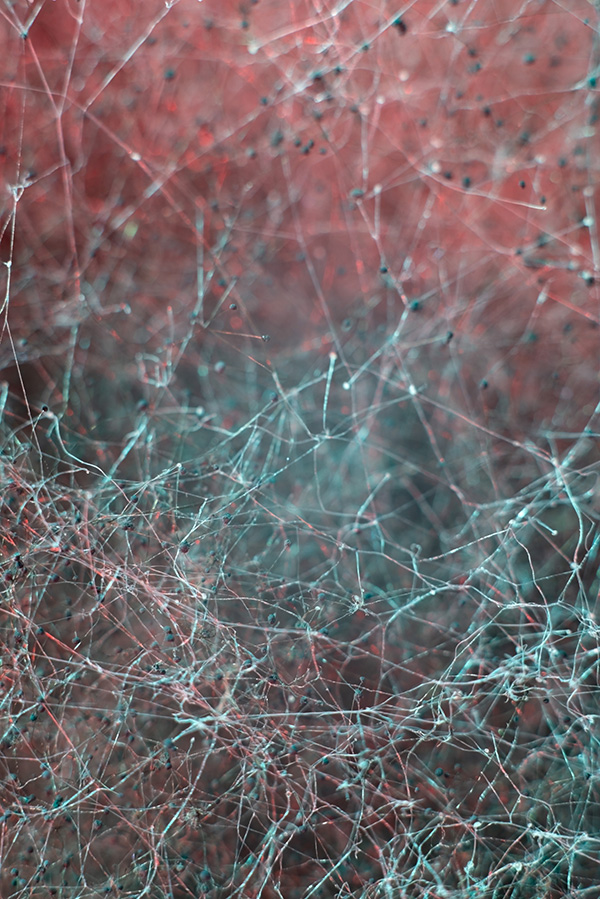Pr Tae-Hee CHO
Service de neurologie vasculaire
Le service de neurologie vasculaire est dédié à la prise en charge, en urgence, des accidents vasculaires cérébraux (AVC) et des accidents ischémiques transitoires (AIT).


Publications
1. Comparison of magnetic resonance angiography techniques to brain digital subtraction arteriography in the setting of mechanical thrombectomy: A non-inferiority study
A Bani-Sadr ; M Aguilera ; M Cappucci; M Hermier; R Ameli ; A Filip; R Riva ; C Tuttle; T Cho; N Nighoghossian; O F Eker; Y Berthezene
Rev Neurol (2022) — Résumé
Introduction: We performed a non-inferiority study comparing magnetic resonance angiography (MRA) techniques including contrast-enhanced (CE) and time-of-flight (TOF) with brain digital subtraction arteriography (DSA) in localizing occlusion sites in acute ischemic stroke (AIS) with a prespecified inferiority margin taking into account thrombus migration. Materials and methods: HIBISCUS-STROKE (CoHort of Patients to Identify Biological and Imaging markerS of CardiovascUlar Outcomes in Stroke) includes large-vessel-occlusion (LVO) AIS treated with mechanical thrombectomy (MT) following brain magnetic resonance imaging (MRI) including both CE-MRA and TOF-MRA. Locations of arterial occlusions were assessed independently for both MRA techniques and compared to brain DSA findings. Number of patients needed was 48 patients to exclude a difference of more than 20%. Discrepancy factors were assessed using univariate general linear models analysis.
2. Assessment of three MR Perfusion Software Packages in Predicting Final Infarct Volume after Mechanical Thrombectomy
A Bani-Sadr; TH Cho; M Cappucci; M Hermier; R Ameli; A Filip; R Riva; t Derex; C Bourguignon; L Mechtouff; O Eker; N Nighoghossian; Y Berthezene
J Neurointerv Surg (2022) — Résumé
Aims To evaluate the performance of three MR perfusion software packages (A: RAPID; B: OleaSphere; and C: Philips) in predicting final infarct volume (FIV). Methods This cohort study included patients treated with mechanical thrombectomy following an admission MRI and undergoing a follow-up MRI. Admission MRIs were post-processed by three packages to quantify ischemic core and perfusion deficit volume (PDV). Automatic package outputs (uncorrected volumes) were collected and corrected by an expert. Successful revascularization was defined as a modified Thrombolysis in Cerebral Infarction (mTICI) score ≥2B. Uncorrected and corrected volumes were compared between each package and with FIV according to mTICI score.
3. Multimodal Imaging with NanoGd Reveals Spatiotemporal Features of Neuroinflammation after Experimental Stroke
Hubert V, Hristovska I, Karpati S, Benkeder S, Dey A, Dumot C, Amaz C, Chounlamountri N, Watrin C, Comte JC, Chauveau F, Brun E, Marche P, Lerouge F, Parola S, Berthezène Y, Vorup-Jensen T, Pascual O, Wiart M
Adv Sci (Weinh) (2021) — Résumé
The purpose of this study is to propose and validate a preclinical in vivo magnetic resonance imaging (MRI) tool to monitor neuroinflammation following ischemic stroke, based on injection of a novel multimodal nanoprobe, NanoGd, specifically designed for internalization by phagocytic cells. First, it is verified that NanoGd is efficiently internalized by microglia in vitro. In vivo MRI coupled with intravenous injection of NanoGd in a permanent middle cerebral artery occlusion mouse model results in hypointense signals in the ischemic lesion. In these mice, longitudinal two-photon intravital microscopy shows NanoGd internalization by activated CX3CR1-GFP/+ cells. Ex vivo analysis, including phase contrast imaging with synchrotron X-ray, histochemistry, and transmission electron microscopy corroborate NanoGd accumulation within the ischemic lesion and uptake by immune phagocytic cells. Taken together, these results confirm the potential of NanoGd-enhanced MRI as an imaging biomarker of neuroinflammation at the subacute stage of ischemic stroke. As far as it is known, this work is the first to decipher the working mechanism of MR signals induced by a nanoparticle passively targeted at phagocytic cells by performing intravital microscopy back-to-back with MRI. Furthermore, using a gadolinium-based rather than an iron-based contrast agent raises future perspectives for the development of molecular imaging with emerging computed tomography technologies.
4. Impact of the reperfusion status for predicting the final stroke infarct using deep learning
Debs N, Cho TH, Rousseau D, Berthezène Y, Buisson M, Eker O, Mechtouff L, Nighoghossian N, Ovize M, Frindel C
Neuroimage Clin (2020) — Résumé
Background: Predictive maps of the final infarct may help therapeutic decisions in acute ischemic stroke patients. Our objectives were to assess whether integrating the reperfusion status into deep learning models would improve their performance, and to compare them to current clinical prediction methods. Methods: We trained and tested convolutional neural networks (CNNs) to predict the final infarct in acute ischemic stroke patients treated by thrombectomy in our center. When training the CNNs, non-reperfused patients from a non-thrombectomized cohort were added to the training set to increase the size of this group. Baseline diffusion and perfusion-weighted magnetic resonance imaging (MRI) were used as inputs, and the lesion segmented on day-6 MRI served as the ground truth for the final infarct. The cohort was dichotomized into two subsets, reperfused and non-reperfused patients, from which reperfusion status specific CNNs were developed and compared to one another, and to the clinically-used perfusion-diffusion mismatch model. Evaluation metrics included the Dice similarity coefficient (DSC), precision, recall, volumetric similarity, Hausdorff distance and area-under-the-curve (AUC).
5. Does Small Vessel Disease Burden Impact Collateral Circulation in Ischemic Stroke Treated by Mechanical Thrombectomy?
Eker OF, Rascle L, Cho TH, Mechtouff L, Derex L, Ong E, Berthezene Y, Nighoghossian N
Stroke (2019) — Résumé
Background and Purpose- The development of leptomeningeal collateral artery network might be adversely affected by small vessel wall alteration. We sought to determine whether small vessel disease (SVD) burden may impact collateral development in patients treated by mechanical thrombectomy for anterior circulation acute ischemic stroke. Methods- The patients admitted in our center for anterior circulation acute ischemic stroke and (1) treated by mechanical thrombectomy with or without thrombolysis and (2) who underwent a baseline magnetic resonance imaging were included in the study. The SVD burden and the pial collaterality were assessed through the cerebral SVD score (severe when ≥1) and the Higashida score (favorable when ≥ 3) on magnetic resonance imaging and digital subtraction angiography, respectively. Any association between the cerebral SVD score and the collaterality were assessed through comparative and regression analyses. Results- Between January 2013 and March 2018, 240 patients met the inclusion criteria (68.7±16.1 years old; 49.2 % female). The cerebral SVD scores were of 0 in 125 (52.1%), 1 in 74 (30.8%), 2 in 30 (12.5%), and 3 in 11 (4.6%) patients. Hundred and thirty-six patients (58.1%) presented a favorable collaterality score. The favorable collaterality subgroup presented a significantly higher proportion of female (79%), lower baseline National Institutes of Health Stroke Scale ( P<0.001), and higher Diffusion-Weighted Imaging-Alberta Stroke Program Early CT Scores ( P<0.001). The regression analyses showed no impact of the cerebral SVD score on the collaterality pattern (odds ratio, 1.11, 95% CI, 0.82-1.50; P=0.51). Conclusions- In patients with anterior circulation acute ischemic stroke, collateral flow status does not seem to be influenced by SVD burden.
6. MRI assessment of Oxygen metabolism and Hemodynamic status in symptomatic intracranial atherosclerotic stenosis: a pilot study
Eker O, Ameli R, Nikolaos Makris N, Jurkovic T, Montigon O, Barbier EL, Cho TH, Nighoghossian N, Berthezène Y
J Neuroimaging (2019) — Résumé
Introduction: The relevance of the brush-sign remained poorly documented in large vessel occlusion (LVO). We aimed to assess the relationship between the brush-sign and collateral status and its potential impact on baseline diffusion-weighted imaging-Alberta Stroke Program Early Computed Tomography Score (DWI-ASPECTS) in acute ischemic stroke (AIS) patients eligible to mechanical thrombectomy (MT). Methods: Consecutive patients admitted in the Lyon Stroke Center with anterior circulation AIS due to intracranial internal carotid artery (ICA) and/or M1 or M2 segment of the middle cerebral artery (MCA) occlusion eligible for MT were included. The brush-sign was assessed on T2-gradient-echo MRI. Collateral status was assessed on digital subtraction angiography according to the American Society of Interventional and Therapeutic Neuroradiology/Society of Interventional Radiology (ASITN/SIR) score.
7. Conventional MRI radiomics in patients with suspected early-or pseudo-progression
A Bani-Sadr, OF Eker, LP Berner, R Ameli, M Hermier, M Barritault, D Meyronet, J Guyotat, E Jouanneau, J Honnorat, F Ducray, Y Berthezene
Neuro-Oncology Advances (2019) — Résumé
Background: After radiochemotherapy, 30% of patients with early worsening MRI experience pseudoprogression (Psp) which is not distinguishable from early progression (EP). We aimed to assess the diagnostic value of radiomics in patients with suspected EP or Psp. Methods: Radiomics features (RF) of 76 patients (53 EP and 23 Psp) retrospectively identified were extracted from conventional MRI based on four volumes-of-interest. Subjects were randomly assigned into training and validation groups. Classification model (EP versus Psp) consisted of a random forest algorithm after univariate filtering. Overall (OS) and progression-free survivals (PFS) were predicted using a semi-supervised principal component analysis, and forecasts were evaluated using C-index and integrated Brier scores (IBS).
8. Impact of Collateral Status on Neuroprotective Effect of Cyclosporine A in Acute Ischemic Stroke
Nighoghossian N, Cornut L, Amaz C, Eker O, Mewton N, Ameli R, Berner LP, Cho TH, Ovize M, Berthezene Y
Curr Neurovasc Res (2019) — Résumé
Background: Neuroprotection for acute ischemic stroke remains an elusive goal. Intracranial collaterals may favor neuroprotective drugs delivery at the acute stage of ischemic stroke. A recent phase 2 study showed that cyclosporine A (CsA) reduced ischemic damage in patients with a proximal occlusion who experienced effective recanalization. Collateral flow may improve this benefit. Materials & methods: Collateral supply was assessed using dynamic susceptibility contrast MRI in 47 patients among the 110 patients from the original study and were graded in two groups: good collaterals and poor collaterals. Patients with good collaterals had significantly smaller initial infarct in both CsA group (p = 0.003) and controls (p = 0.016). Similarly, the final lesion volume was significantly lower in patients with good collaterals in both groups.
9. Collateral circulation assessment within the 4.5h time window in patients with and without DWI/FLAIR MRI mismatch
Berthezène Y, Eker O, Makris N, Bettan M, Mansuy A, Chabrol A, Mikkelsenm IK, Hermier M, Mechtouff L, Ong E, Derex L, Berner LP, Ameli R, Pedraza S, Thomalla G, Østergaard L, Baron JC, Cho TH, Nighoghossian N
J Neurol Sci (2018) — Résumé
Objectives: The aim of the present study was to assess the association between collateral status and DWI-FLAIR mismatch in patients with acute ischemic stroke within the 4.5 h time-window. Methods: We analysed DWI, FLAIR, and PWI data in patients within 4.5 h after symptom onset from the I-KNOW European database. Collateral flow maps were graded by analyzing contrast ‘staining’ extent over the early, mid and late perfusion phases. ADC values, DWI lesion volume, and normalised perfusion parameters (CBV,Tmax) within DWI lesions were determined. Visibility of parenchymal hyperintensivty on FLAIR was evaluated (« FLAIR positive »), and DWI-FLAIR mismatch was assessed. Spontaneously reperfused regions were defined as voxels with Tmax <6 s within the DWI lesion. Final infarct size was assessed on day-30 FLAIR images.

